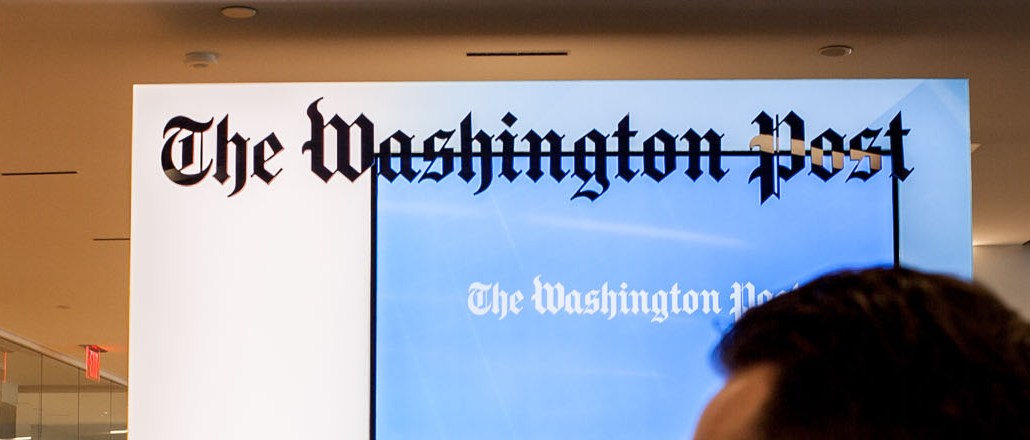
The Washington Post believes there are people who are passively following the election, wanting to stay reasonably informed. And then there are the people who want to parse every last detail. To cater to this audience, the publisher is going to Facebook Live to provide extras and outtakes of the proceedings.
Tonight marks the eighth (eighth!) Democratic primary debate between Hillary Clinton and Bernie Sanders. Hosted by The Washington Post and Univision News, it will be broadcast on TV on Univision (in Spanish) and CNN and Fusion (in English). The entire debate will also be live streamed by the Post on its website and Apple TV app, starting at 8:45 p.m. ET.
But on Facebook, the publishers will provide a deluxe second-screen experience for the politically obsessed, including live behind-the-scenes coverage, analysis from debate moderators in advance of and directly after the event, as well as real-time observations from Post reporters through the broadcast. In total, the Post and its reporters expect to go live nearly a dozen times by night’s end.
“There are people who are going to follow [the debate] on Facebook. That’s an audience we want to reach, with as much content as they want,” said Micah Gelman, director of editorial video for The Washington Post. “It’s a great opportunity to show what goes on behind the scenes. People are interested in that part of the political process, and Facebook Live allows us to really dive deep in a way that we couldn’t in a traditional streaming opportunity.”
In other words: go to the Post’s wesbite and Apple TV app for a live stream for the actual debate and anchored analysis; go to its Facebook live streams to get a feel for what the debate atmosphere is like and real-time expert opinions from the paper’s crew of political reporters.
As with other publishers embracing Facebook live streaming, Gelman admits that the appeal of Facebook versus other live video platforms is in its reach. The publisher has more than 3.9 million Facebook fans, who — as long as they haven’t turned live notifications off — will be notified by Facebook whenever the publisher initiates a live broadcast.
As a result, the Post has been experimenting with Facebook live streaming for a few months. It will host Q&A’s with reporters out on the field or the newsroom and go live when applicable during a major news event — such as the recent East Coast blizzard. In a typical week, the publisher produces 6 to 12 live streams per week, according to Gelman.
The effort is overseen by the Post’s social media team. Though video content produced by the team often happens in collaboration with the publisher’s video team, which staffs 40 people. (It helps that Facebook live videos don’t require more than two or three people.)
“We’re still trying to figure out what the right rhythm is,” said Gelman. “We don’t want to formalize something that’s not practical. We want to figure out what the audience is, the right time of day, the amount of resources we need to devote to it — and then we will grow it.”
The Post’s Facebook live efforts also coincide with a greater focus on live content in general across the paper’s digital platforms. Whereas before the paper would do one or two live broadcasts around major events, since last fall it’s been producing multiple live segments per day spanning breaking news, event coverage and analysis.
Facebook Live will remain a key area of focus for the Post as it continues to distribute content on the platform. While it’s going for the raw, intimate look right now with its live streams, the Post doesn’t rule out doing more polished live broadcasts on Facebook in the future. “They’re planning to evolve the platform to allow for that,” said Gelman.
More in Media

Walmart rolls out a self-serve, supplier-driven insights connector
The retail giant paired its insights unit Luminate with Walmart Connect to help suppliers optimize for customer consumption, just in time for the holidays, explained the company’s CRO Seth Dallaire.

Research Briefing: BuzzFeed pivots business to AI media and tech as publishers increase use of AI
In this week’s Digiday+ Research Briefing, we examine BuzzFeed’s plans to pivot the business to an AI-driven tech and media company, how marketers’ use of X and ad spending has dropped dramatically, and how agency executives are fed up with Meta’s ad platform bugs and overcharges, as seen in recent data from Digiday+ Research.

Media Briefing: Q1 is done and publishers’ ad revenue is doing ‘fine’
Despite the hope that 2024 would be a turning point for publishers’ advertising businesses, the first quarter of the year proved to be a mixed bag, according to three publishers.





